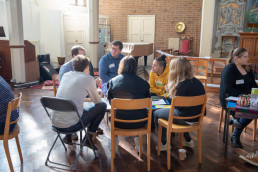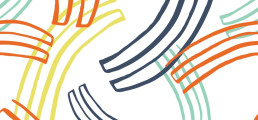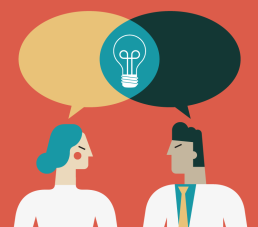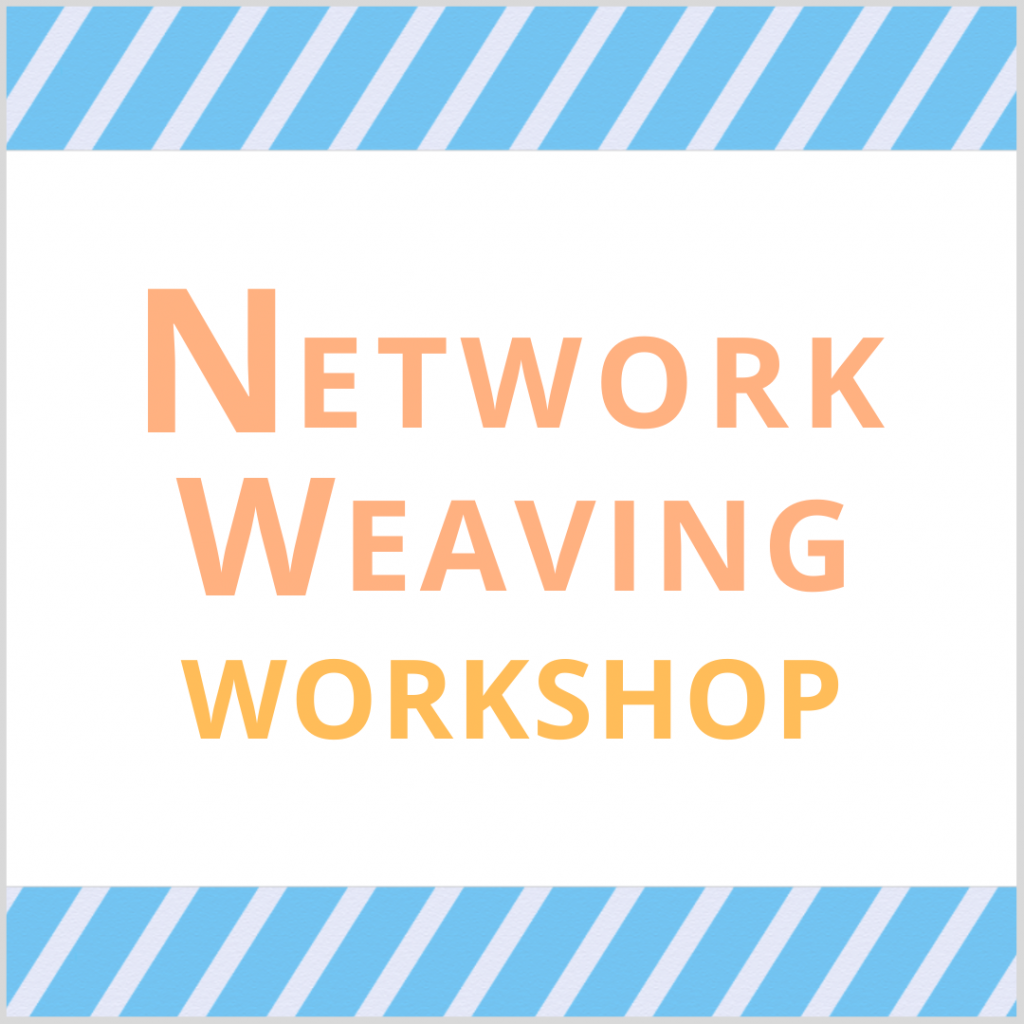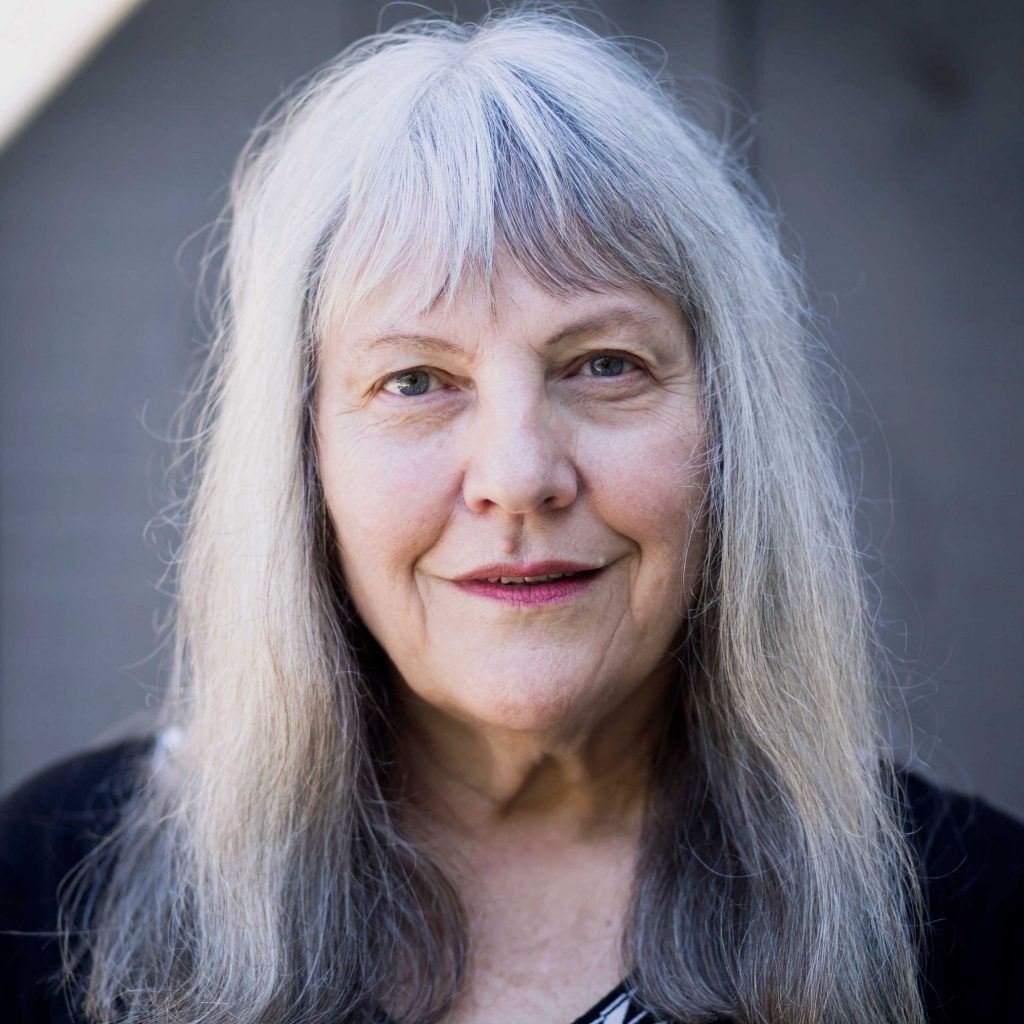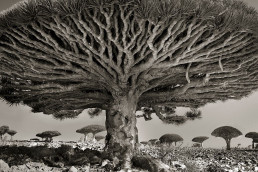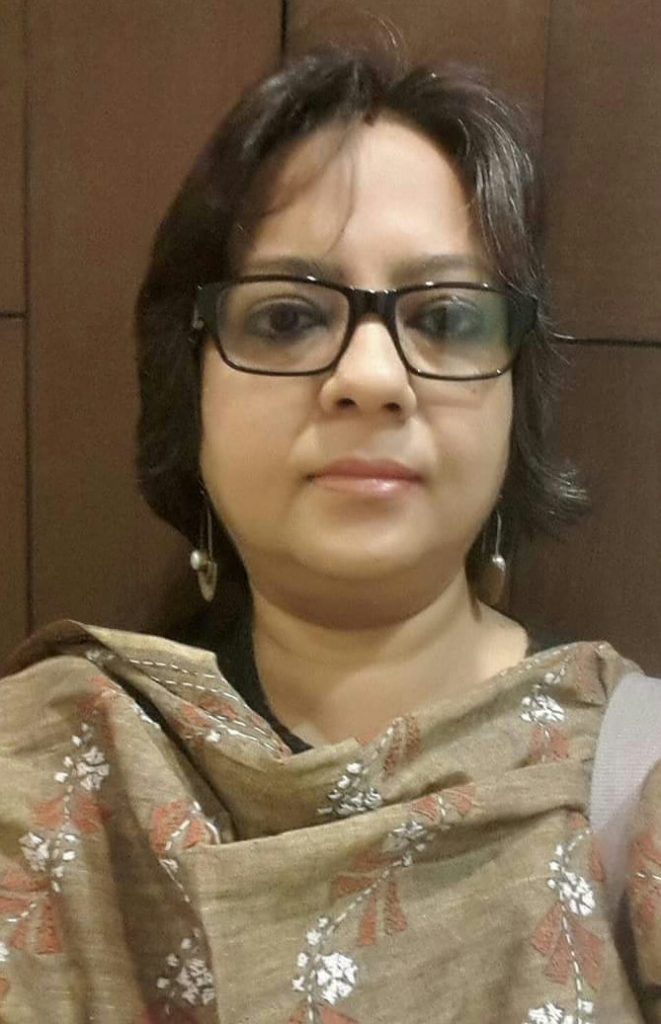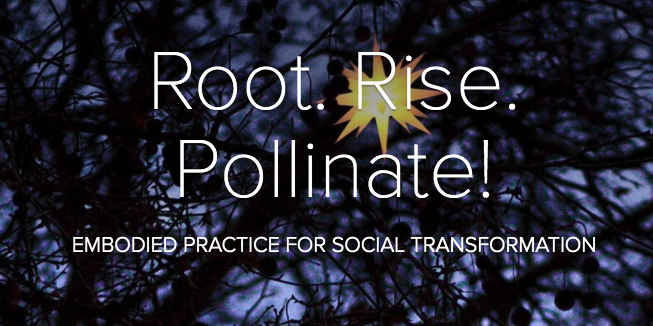Getting to the Goods (and Beyond “Folded Arms” Syndrome) in Impact Networks
“Your generosity is more important than your perfection.”
Seth Godin
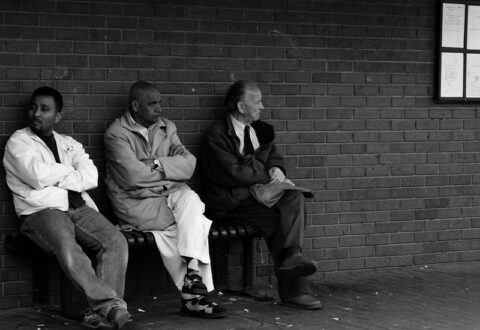
Over the past 20 years of working with a variety of social change networks, I have observed a common dynamic surface after the initial enthusiasm and launch phase. As happened recently with a place-based network about a year into its development (navigating COVID and political uprisings along the way), some members started to bang the “What have we actually done?” drum. Contextual crises notwithstanding, this is not an inappropriate or unhelpful question. As important as relationship and trust-building is, there can come a time when people want to know … “So what?” Sometimes this comes from what we might call more “results-oriented” people in the network. Or it may come from the more time-strapped and stressed, those from smaller organizations, or those who just genuinely don’t see the return on their investment. When this has come up, and people are either holding back (“folded arms”) or threatening to walk, I have witnessed and facilitated several different ways of moving through the real or perceived lack of progress.
- “If you want it, then you better put a ring around it” – In one instance, the convening team of a state-wide network essentially drew a line around all of the network participants and started claiming their successes as network successes. This might sound a bit shady, though it was not done in that spirit. By celebrating “your success as our success,” people felt appreciated and started to turn towards one another and see themselves as a bigger we. They didn’t have to wait to get to mass action. Smaller subsets having success counted.
- Get a quick win – In another state-wide network, fraught at the outset by folded arms despite the fact that people would regularly physically show up for meetings, a network coordinator seized upon a timely policy advocacy opportunity that surfaced, which resulted in a mass outpouring and a legislative win. Nothing sells like success. That early victory got people eager to see what else they might be able to accomplish and they settled in for some more relationship-building.
- Collect and share connection stories – We know that relationship-building is not just about the relationships. It can lead to new partnerships and projects. Often this happens at the start of a network, but is not tracked. We worked with another place-based network that intentionally set out to track the results of connections made in and through the network, and then shared these with the network as a whole. More about connection stories here.
- Highlight the unusual and adjacent conversations – What makes many of the networks we work with unique is that they bring together people who do not often work with each other. Highlighting this and also what emerges out of novel interactions across fields can make “just talking” into exciting explorations and engines of innovation. For a little inspiration on this front, see “Why the most interesting ideas happen at the borders between disciplines” from Steven Johnson at Adjacent Possible (!).
- Pump people up, individually and collectively – Let’s face it, in these times (and really all times), expressing genuine appreciation can go a long way. We work with a network convenor who does this wonderfully, tracking and celebrating people for their individual contributions outside of network gatherings, and constantly speaking to the power and potential of the collective. She just makes people feel good! This can make the proverbial “marathon, not a sprint” more enjoyable.
- Get a super weaver going – Having a really adept and energetic network weaver can make all the difference in the early stages of a network. We have seen the impact this can have when ample capacity is created to regularly check in with people, listen to them, make connections between different needs and offers in the system, and encourage people to share more with one another. When those exchanges start happening, the “there” there is often more apparent.
- Lift up the network champions – Generally there is a small group of people who really appreciate and lean into the value of the network from the get go (gratefully receiving and using resources that are shared, following up with new connections, testing out new ideas, leveraging the network as a platform), making it happen and not waiting for it. Observing this, capturing it, and sharing it with the network can help make the point that the network is what people make of it and give ideas for how to make this happen.
What have you done to successfully navigate impatience and intransigence in impact networks?


About the Author:
Much of Curtis Ogden's work with IISC entails consulting with multi-stakeholder networks to strengthen and transform food public health, education, and economic development systems at local, state, regional, and national levels. He has worked with networks to launch and evolve through various stages of development.
Originally published at Interaction Institute for Social Change

Network Weaver is dedicated to offering free content to all – in support of equity, justice and transformation for all.
We appreciate your support!
donate in the box above or click here
Community engagement: How to create meaningful connections in an age of distrust
Community engagement is a term applied in various contexts, often meaning different things to different audiences. It is sometimes used interchangeably with other concepts such as community outreach or community consultation. For the purpose of this article, we utilise the term community engagement to describe a process where local government, charities, and funders collaborate meaningfully with the communities that they serve.
The insights presented in the following text are informed by our experiences working with the above groups. We hope this article is particularly useful to those who are hoping to build stronger and better-informed relationships with their communities.
Community engagement
Community engagement is a key part of any project or programme that seeks to directly enhance the lives of the public. When providing services that affect people belonging to a defined area or group, building relationships within that community is a non-negotiable. Whether you’re a charity, funder or government authority, understanding what communities are thinking and feeling, and taking those thoughts and feelings seriously, is the only road to a legitimate and meaningful partnership.
What is community engagement?
Why is community engagement important?
How should I approach community engagement?
Download The Community Engagement Canvas [Free Resource]
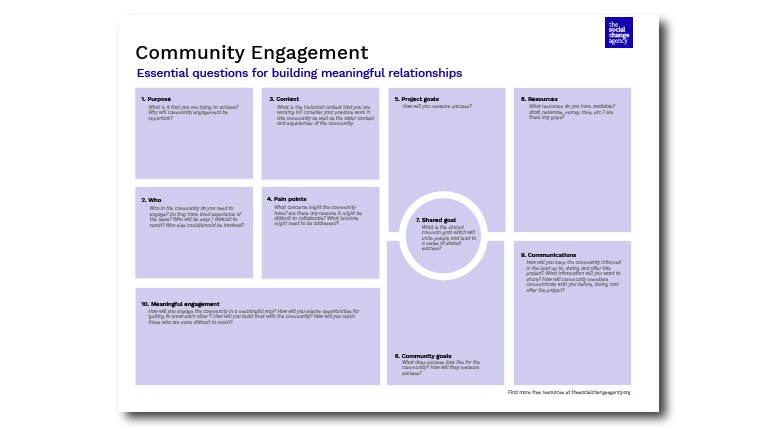
What is community engagement?
Community engagement is all about supporting communities to take ownership of the resources that are available to them. This means taking an active role in creating partnerships between the institution that is providing those resources, such as a local council or charity, and the communities that will be receiving them. Grassroots, voluntary and faith organisations as well as mutual aid groups are deeply embedded in their communities and have a great understanding of local dynamics. This is what makes them such important partners for service providers.
In the simplest sense, community engagement is likely to involve connecting with community leaders and facilitating conversations about what they would like to see happen in their communities. This might look like restoring public spaces such as libraries or a community garden, engaging in discussions around improving housing standards or planning and programming a community event.
Why is community engagement important?
Over the last two decades, trust in ‘big’ institutions has been in a state of flux. Historical events such as Brexit and more recently COVID-19 have shifted our understanding of public life and how we relate to the institutions and organisations that shape it. The latest British Social Attitudes Survey reported that only 23% of people trust the government to put the needs of the nation before the interests of their party. So, how can those with institutional power begin to build back trust with the communities that they serve?
An approach gathering momentum in the US termed ‘earned legitimacy‘ puts forward the argument that it is the role of public institutions to build bridges with communities who have lost faith in their ability to serve. More specifically, it suggests that a public institutions’ legitimacy hangs directly on how much their community trusts them to act justly on their behalf.
Government might be a useful example to illustrate the meaning of earned legitimacy, but we believe that this approach is a solid one for any organisation that has the power, resource and will to engage communities in their activities. In short, it’s on you to put the work in.
How should I approach community engagement?
1. Get real about the role of history
When you work for a long-established organisation with substantial control over wealth and resource, people are likely to have pre-existing ideas about what you do and how you do it. Historically, many communities have been underserved and even harmed by powerful institutions. We see examples of this frequently in the news, whether it’s black individuals being more likely to be subject to stop and search or international charities such as Oxfam’s failure in preventing abuses of power. It makes sense that some communities are sceptical to work with those that have represented racism, mistreatment and harm to them in the past.
‘What are your concerns about this organisation and is there anything we can do to reassure you?’
The Centre for Public Impact recently released a report on how they went about restoring trust between Americans and local government by working with local communities in four different parts of the US. This involved “acknowledging past wrongs and showing a commitment to confront[ing] present-day […] issues.” The report highlights how important it is for historical tensions to be addressed with openness and honesty, especially in the early stages of relationship-building. This may involve asking community members questions such as ‘How do you feel about working with us?’ or ‘What are your concerns about this organisation and is there anything we can do to reassure you?’ before embarking on a shared venture.
2. Recognise that expertise exists within communities
The starting point for community engagement should almost always be that nobody understands what a community wants and needs better than the people belonging to the defined group. Big institutions often work with experts and consultants to problem solve and generate solutions. The Social Change Agency believe that the answers exist within communities and it’s really about creating safe spaces where those insights can be shared. If you are engaging communities in a consultation process, it’s worth considering that individuals should be paid for their time. They’re the real experts.
3. Getting to know each other is work too
With deadlines, budget restraints and the pressure to demonstrate outcomes, we often want to skip small talk and get right to the finished product. If you have the power to write ‘getting to know each other’ time into your project plan, this could really support relationship-building with your community and will almost definitely make things more efficient in the long run. Taking the time to visit the people you’re hoping to engage with and really understanding what motivates them can help to create the conditions for a durable partnership.
4. Communication, communication, communication
Whether it’s email, Slack, WhatsApp or Facebook, the way we interact often shifts depending on audience and urgency. This is no different when we are engaging with community networks. If barriers to communication emerge, it can drastically affect your relationship and slow down the pace of delivery. At the very beginning of your community engagement endeavour, ask community members how they would like to be contacted and what is most convenient for them. Make it as easy as possible to connect but create boundaries around how often and when is appropriate to communicate. This will give you a solid vehicle via which collaboration can flourish.
5. Defining success together
What success looks like to communities and what success looks like to funders, governments and charities are often two entirely things. Success to a local authority might be engaging 20 different community groups in a consultation process before opening a new digital community hub. Community members may visualise success as guaranteeing this space is free to use for certain age groups.
A way of define shared success might be creating an accessible and affordable digital hub designed by and for the community. It’s worth having a conversation about what both of your ambitions are for working together and creating a sense of shared purpose in your collaboration. Establishing a common goal is likely to keep you connected as you move through the logistics of delivery.
originally published at Social Change Agency
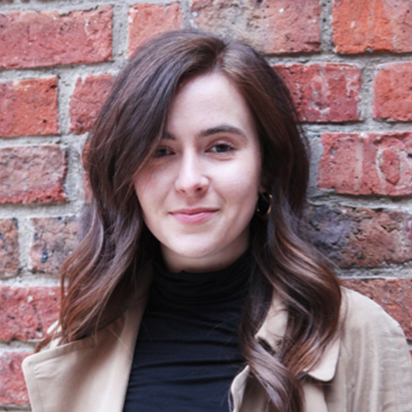
Maisie Palmer 's interests lie in social innovation, education, and supporting community-led movements. Prior to joining our consultancy team, she was National Programme Lead for Education at The Roots Programme where she designed and delivered an exchange programme tackling social division amongst British youth. Maisie founded Mxogyny an online and print publication for marginalised creatives. She has also worked for the Secretary of State for Scotland and the International Criminal Court. Maisie holds an MA in Politics from the University of Edinburgh and studied at Sciences Po, Paris as an Erasmus scholar.

Network Weaver is dedicated to offering free content to all – in support of equity, justice and transformation for all.
We appreciate your support!
donate in the box above or click here
Weaving at Work
Over the past few years, I have been increasingly influenced by the concept of “weaving” — what for me means connecting people, ideas, and projects to foster more collaborative social change.
Weaving is a skill, a mindset, and a way of being. More art than science, it requires deep listening, being responsive to interests and needs, and “sensing” opportunities to bring people or projects together.
In many ways, it’s synonymous with other terms we use like facilitation, collaboration, networking, community building, relational leadership, etc.
I find weaving to be an incredibly powerful tool for fostering collaboration, decentralizing ownership, and sparking wide-scale impact.
But weaving often clashes with our traditional workplace habits and structures
One of the things I’ve been struggling with lately is how to make weaving a regular and consistent part of our team.
In the network I run, despite multiple attempts weaving still doesn’t show up in our to-do’s or our impact tracking system. When our time is limited (which is almost always), it quickly becomes a “nice to have”.
Often, we work in systems that are linear, logical, and task-based—from project management, to communication and coordination, to data analysis. Weaving is by nature more intuitive, emergent, and relationship-focused, and sometimes just doesn’t seem to fit.
As a result, weaving can be hard to integrate into our task lists, to coordinate across our team members, and to openly report on. And because our managers and supporters usually don’t see or experience it themselves, it can go unnoticed and misunderstood.
So how can weaving become a core activity that we regularly practice and valorize in our workplaces?
Last week, June Holley and I hosted a brainstorming session with the Weaving Lab around this question. Here are some of the ideas that came up:
- Weave everywhere, all the time — and explicitly state that you’re doing it. For example, in interviews you can cluster small groups of people who don’t know each other and tell them relationship building is a core goal of the interview. In team meetings you can leave time for storytelling and explain why this is important for building trust. In large group events you can integrate simple getting-to-know-you activities, and explain how connections are the core of any collaborative work.
- Explicitly write weaving in our daily task lists. Be they digital or analogue, try to make sure weaving is written down as a regularly-occurring task (e.g. weekly) for each team member. So even when a direct opportunity for weaving doesn’t show up to you, your job is to “find” one.
- Enable weaving through a light-touch database system. Keep an updated list of your team and community members’ needs, interests, gifts, skills, fields of work, engagement level, etc. Make it simple, so it’s easy to skim. And use your weekly task to actively “identify” new opportunities for weaving (don’t expect community members to do this themselves!). For example: find 3 people who haven’t met but you think would get along and introduce them to each other. Or, share a funding opportunity with 4 people working in a similar field of interest. By the way, CRM systems aren’t set up for this, so consider using a flexible tool like Asana or AirTable, or a network mapping tool like Kumu.
- Don’t weave alone or in isolation — weave with others. Mark “weaving opportunities” as a fixed item in your team meeting agenda. This helps you better coordinate to avoid overlap, be creative in finding weaving opportunities, and be accountable to making it happen, while also building a culture of weaving. One note:make sure your team has diverse weaving capacities so you can complement each other.
- Document and share weaving through simple and regular processes. Integrating weaving updates into your team meetings—e.g. “what relationships have we build this week” — so you capture and share things you may not have recalled. Have a simple “checklist” for immediately logging when weaving occurs (make it super easy, 15–30 seconds to open, log, and close). And do annual surveys and check-ins with your community to see what impact weaving has had over time.
- Help people whose support you need (e.g. bosses, funders) to “get” it. Use common concepts and metaphors that can make weaving easier to understand. Collect stories of weaving and share those with them. Invite them to to engage directly in weaving practices (e.g. a peer-to-peer problem-solving session where they can get support on a challenge they face and experience weaving in practice). And hold multiple meetings with them where you let them can ask you questions and get to know the practice better.
What would you add?

Brendon Johnson is a seasoned changemaker with a passion for strategies and models around networks, communities, participatory organizing, and collaborative action
Originally published at Medium
Photo by Alina Grubnyak on Unsplash

Network Weaver is dedicated to offering free content to all – in support of equity, justice and transformation for all.
We appreciate your support!
donate in the box above or click here
What is Network Weaving? - Q & A with June Holley
June Holley is a Wellbeing Blueprint signer who has been weaving networks, helping others weave networks and writing about networks for over 40 years. We recently sat down with June to define network weaving and help us understand how it can be a game changer in building our collective capacity to bring about social change.
Q: What is network weaving?
A: Network weaving is something that we all do. It’s paying attention to the relationships around you and noticing who’s missing, who’s not being listened to, and helping create healthier, deeper relationships. You do this by bringing new people in, by connecting people within your existing networks, and helping them get to know each other so they can work together.
Q: What is the difference between networking and network weaving?
A: When people think of networking, they think of passing out business cards to people at a conference and selling themselves. So networking is all about yourself. But when you move to network weaving, it’s about the community. It’s about the people around you and helping them build a network that can be capable of support and action. It’s a pretty different thing.
Q: What does network weaving have to do with building a country where everyone has a fair shot at wellbeing?
A: The concept of wellbeing is really complex and there are a lot of pieces to it. It might be about health access, it might be about creating a safe community. But before people can begin to work and co-create these kinds of things in their community, they need to know each other deeply. They need to be able to trust each other so they can work together. Working on the network and relationships is about creating the foundation, the fertile ground, on which aspects of wellbeing can emerge. So the more time you invest in building relationships, the easier it will be to work together on wellbeing.
Q: What’s one thing someone can do to start network weaving?
A: One of my favorites that you can do at every meeting you have is called speed networking. It’s a way to help people either get to know people that don’t know each other, or help to deepen relationships.
It goes like this: you ask people to stand up and find somebody they don’t know or don’t know well. And then you give them a juicy question like, “What’s keeping you up at night?” Or “What’s something about yourself that not many people know?” And you give them about five minutes to talk back and forth. Then you have the group come back together to debrief. You can ask them what made their partner a good listener. People will list things like eye contact, nodding, asking good questions, feeling really heard, etc.
Now that the group has established some guidelines for good listening, you ask everyone to pay attention to their listening skills in the second round. Then you give them another question, they go off and talk to somebody different this time. After the group reconvenes, everyone can share out the difference they noticed during this round. Often people will say they noticed themselves being a better listener and getting more out of the conversation.
There are lots of very easy, small things that you can do to interact with people in new ways that are much healthier and lead to much more effective and interesting actions.
Learn More
- For tools, resources and events, visit dev.networkweaver.com.
- For an introduction to June’s thinking around network weaving, check out her collection of posts on Medium.
- To ask questions and connect with a community, join the Network Weaving Facebook group.

You can also download a pdf with a link to this interview to save to your personal library by visiting the Network Weaver Resource Page.
Originally published at Wellbeing Blueprint

Network Weaver is dedicated to offering free content to all – in support of equity, justice and transformation for all.
We appreciate your support!
donate in the box above or click here
Energy System Science for Network Weavers: A Summary
“Culture is a verb.”
– Rowen White, Seed Keeper, activist and farmer from the Mohawk community of Akwesasne
“It’s all about how things are flowing.”
– Gwen McClellan, acupressurist and holistic healer
“A living body is not a fixed thing but a flowing event, like a flame or a whirlpool.”
– Alan Watts, philosopher and writer
“Seeing energy flows so that we can engage with them in positive ways is not some mystical, esoteric art, but the role of engaged human beings.”
– Joel Glanzberg, permaculturist and sustainable builder
Last week I teamed up with Dr. Sally J. Goerner, who stewards a transdisciplinary team of researchers and practitioners in the Research Alliance for Regenerative Economics, to offer an interactive session to The Weaving Lab on the Energy System Sciences and how they might support network weavers working for social change in a variety of contexts. Energy System Sciences (ESS) is “an umbrella term for disciplines that use the study of energy flow networks to understand the laws of systemic health, growth and development in living, nonliving and supra-living systems.” ESS disciplines include: Chaos, Complexity, Resilience, Ecological Network Analysis, Self-Organization Theory, Nonequilibrium Thermodynamics, Panarchy, and others. It was a lot to present and absorb and process during our short 2 hour session, and so I have made an effort here to summarize and simplify …
Everything is made up of energy, so says “western” science and also many wisdom traditions (think spirit or chi) and indigenous peoples (see Sherri Mitchell), but many of us often don’t like to use the word “energy” (too woo woo). And perhaps that is to our detriment! Switching from a “matter” orientation about everything to an “energy” view can help us see and do things differently.
Systems are complex networks of interconnected “parts” that work together. Flows of energy of different kinds are crucial for a system to function (carbon in the biosphere, traffic in cities, supplies and information during a disaster response, ideas and emotions in a social group, nutrients on a farm, money and other resources in economies).
The Energy System Sciences (ESS) see all systems as “flow networks” or structures that arise from the circulation of resources, information, nutrients, etc. Thinking through the lens of flow, systemic health can be seen as being based on things like: investment and re-investment of key and diverse resources, healthy outflows (not polluting or poisoning the ecosystem), the velocity and spread of resources in the system, cross-scale circulation, etc. The nature and quality of these flows determines how systems are able to adapt and evolve in healthy and health-promoting ways.
ONE BIG PROBLEM now is that there is a dominant narrative stemming from the power and influence of oligarchy (rule of and for the few) and oligarchic capitalism (economies that are run by and support the few), which seeks to increase the wealth of “elites” at the expense of most people and the planet. Narrative, in contrast to story, is a way of looking at the world. In a sense, it’s a big story that influences thought, meaning and decision-making. The dominant oligarchic narrative and view is grounded in things and beliefs like “the divine right of capital and kings,” a master/slave mentality, dominance, supremacy ( based on race, gender and other markers of identity), narcissism, coercive hierarchies, “survival of the fittest,” and self-interest.
The oligarchic view cuts against the evolutionary promise of the Energy System Sciences in that it gets in the way of the kinds and qualities of flows needed to keep the whole body of humanity healthy and in right relationship with the planet. It prevents pro-social and pro-ecological evolution. For example, at a smaller scale, if we only privilege a certain part of our physical bodies (our heads or brains) over and at the expense of other parts of our bodies (for example, our hearts, our guts), this can have damaging impacts for the neglected parts and our entire bodies, and diminish our intelligence. Science is increasingly showing that our hearts and guts give us access to important information about the world around us. And our health and development are being shown to rest upon more integration and coherence between the different biological systems that make us up (digestion, vascular, nervous, etc.).
Against the oligarchic capitalist view is another view of humanity as being a collaborative learning species that can ground itself in common-cause and cooperative culture (including values of equity, justice, fairness, trust, transparency, mutualism) and seek resilient and regenerative economies and other systems that guarantee long-term human thriving for the many and for the diverse and not just the few and the alike. This narrative and set of beliefs aligns with the Energy Systems Sciences. Together they suggest that to support healthy and health-promoting webs and flows, it is important for groups of people to integrate the following core pillars, economically (especially in the etymological sense of the word – “household management”) and culturally:
- Circulate diverse resources regeneratively, at and between different scales/levels
- Create and sustain flexible and resilient structures of different and balance sizes
- Ground in common-cause values such as mutuality, trust, transparency, equity, justice, fairness, accountability
- Engaged in collaborative learning that supports intelligently adaptive responses and actions
For example, as Sally Goerner lifts up the following (it may be helpful to click on the image below):

We can also bring attention back to our own selves and how we interact with others to see how the energy system sciences can guide us. We can have stagnant energy if we are not inviting new ideas in or not releasing emotions. We can quickly get overwhelmed if we open ourselves to too much energetic flow of information or emotion, especially if it is negative or challenging. If our bodies are not structurally strong and flexible, they can be more prone to dis-ease. If our social organizations are overly rigid, they can be un-responsive to change and unable to adapt accordingly. If we are not having honest conversations with one another, that “clear the air” (and move energy through as it needs to), we can get bogged down in unhealthy interpersonal dynamics. The emotional body language and tone we convey energetically can impact our interactions with others (and flow widely in larger networks!). If we are not attending to what is otherwise sealed away in our insides (which equates with dissociation) this can also have impacts on how we are with ourselves and one another.
Bottom line: We share a hope that many more of us can become adept energy and flow scientists, artists, healers, weavers and workers as we intentionally create patterns that are the basis of the better world we sense is possible and know is necessary.

About the Author:
Much of Curtis Ogden's work with IISC entails consulting with multi-stakeholder networks to strengthen and transform food public health, education, and economic development systems at local, state, regional, and national levels. He has worked with networks to launch and evolve through various stages of development.
Originally published at Interaction Institute for Social Change
featured image found HERE

Network Weaver is dedicated to offering free content to all – in support of equity, justice and transformation for all.
We appreciate your support!
donate in the box above or click here
Networks: Resourcing Relationships and Interdependence for an Equitable Future Now
Networks for Equity and Systems Change
The events of the past year have made clear what many in and outside of philanthropy already knew: that equality in resource distribution is not equity, that much of what was thought impossible to change – telework policies, reporting requirements, fiduciary responsibilities – is suddenly possible, that what we need to shift big systems is interdependence (not codependence), and that what is needed for this shift to happen begins with strengthening our relationships with one another – as individuals, organizations, and communities.
Networks offer a structure for linking people and groups of people with a shared vision and shared values to build and strengthen the relationships necessary to shift big systems. By offering us opportunities to work together in ways that challenge us to build different understandings of and relationships to power and to each other, we are able to move in more interdependent and interconnected ways.
Many individuals and organizations – particularly those rooted in Black and Native communities, queer communities, and immigrant communities – have experience working in networks both rooted in and working to advance equity and justice yet are often not sufficiently resourced for this work. Other entities, including many funders, are bringing increased attention and resources to working in this way and yet these many groups that are poised to resource networks are still just learning about how to do so in ways that align with equity and manage disproportionate power dynamics.
In this moment of possibility for reimaging big systems to live our imagined future of love, dignity, and justice now, we are sharing some learning from a late-2019 gathering of nearly 70 network funders, practitioners, and participants about how network practitioners and some funders are nourishing and growing networks for equity and systems change.
An Experiential and Embodied Approach to Learning in Networks
The Networks for Equitable Systems Change gathering was co-created in partnership with Change Elemental, Uma Viswanathan and Matt Pierce at the Robert Wood Johnson Foundation, and a design team of network practitioners including Allen Kwabena Frimpong, Aisha Shillingford, Marissa Tirona, Robin Katcher, and Deborah Meehan. The group came together to engage with practices for building, resourcing, and sustaining networks. Together, we set out to learn about the following questions:
- How have funders and other organizations worked together in networks that promote equity and systems change?
- What are the barriers to resourcing networks for equitable systems change and what would it take to shift those barriers?
- What is the personal work and way of being needed to fully engage in networks, equity and systems change?
While desk research and interviews can be useful learning tools, we decided to take an experiential and embodied approach to learning about our questions. By bringing convening participants into the experience of network building in real time, we were able to create shared experiences that led to shared understanding about what it takes to build and sustain networks that can shift systems.
We can’t shift systems when we’re only touching one part of the elephant. We need spaces where the whole ecosystem comes together, bringing various perspectives that can give us a picture of the whole. Rather than host separate conversations with funders, intermediaries, and grassroots organizations, the gathering brought together many parts of network ecosystems to discuss how folks were experiencing power sharing within networks.
Below are some of the ways the experiential design of the convening – in addition to the deep expertise and knowledge that participants brought to bear – helped co-create our elephant and answer some initial questions about networks…
We Challenged Dominant Ways of Building Alignment through Rigid Frameworks and Definitions and Instead Reached Shared Understanding with Storytelling
Through experiential learning and storytelling, convening participants aligned on shared definitions for what we mean by a network as well as successful practices for building, sustaining, and resourcing networks.
With our design team, we co-created a learning network that engaged people with different access to resources, different kinds of power, and different experiences and roles in networks. We were concerned about bringing so many different folks together to talk about networks when we all were coming in with these different experiences, definitions, etc. We faced the same pressure points that networks face: how do we distribute resources across this group and compensate people for their time and labor? How can we facilitate more open discussions with transparency and deeper sharing among groups who have different priorities, expertise in networks, roles in the movement ecosystem, and kinds of power? Where do we need alignment and shared definitions and where should we hold generative tensions and conflict?
Initially, we considered aligning the group through some shared definitions and research in networks before coming together, but that process seemed time consuming and didn’t fully honor the wisdom in participants’ different perspectives and experiences. Instead of creating written definitions and a compilation of research to align participants on a common framework, we had attendees prepare spark stories – a short story that communicated their experiences and challenges in a network when working across funders, individuals, grassroots organizations, and other entities. Participants shared stories in small groups and each group created an image to show similarities and differences in themes across stories. The storytelling accelerated shared understanding in small groups and highlighted the multiple perspectives in how participants understand and experience networks.

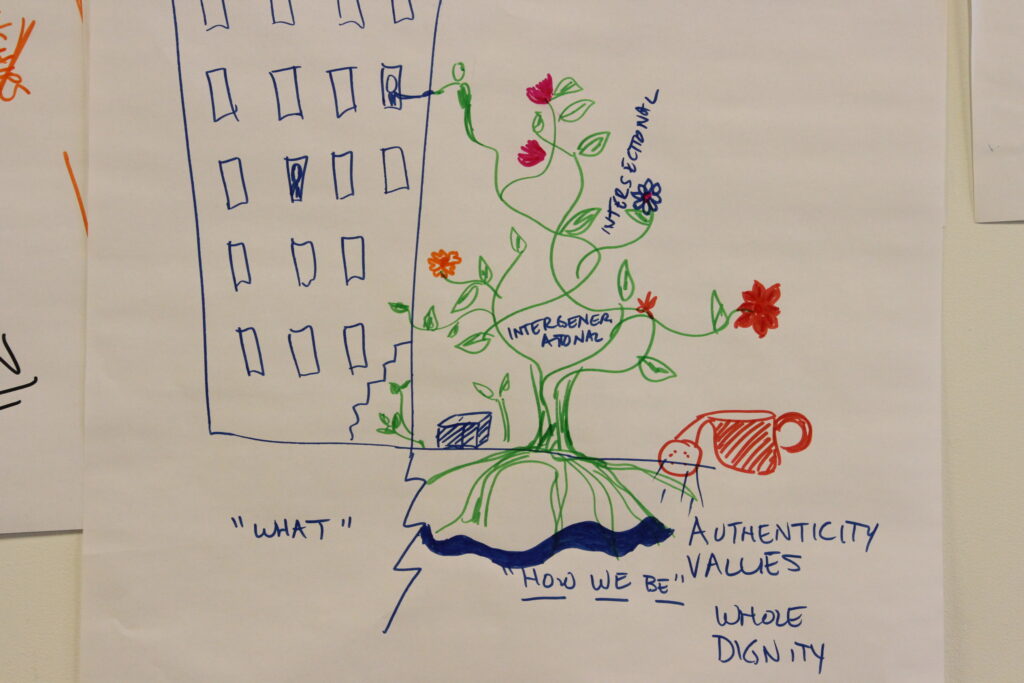
Many participants also shared their spark stories in video conversations. In this video, design team member Allen Kwabena Frimpong and Rachel O’Leary Carmona from AdAstra Consulting share their own definition of a network.
We Used Art Making to Illuminate Power Differences and Start Deeper Conversations about Power Sharing in Networks

Navigating power differentials – including naming and managing them – was a key element in supporting shared learning in this diverse space and also mirrored the ways in which engaging with power can create generative conflict that supports network building or exacerbates unnamed tensions that derail it.
At one point before the convening, some funders were feeling nervous about their power relative to other groups and considered having a separate space. We ultimately decided against that and instead brought funders together to discuss how we might acknowledge and visibilize power differentials (rather than obscure them). We also saw this as a way for funders to build practices for being in spaces where they have more power related to resourcing (such as in a network).
In an exercise from Theater of the Oppressed participants could make visible the power differences between funders that financially resource networks and other network participants. Participants positioned chairs differently based on their vantage point and each new sculpture was in dialogue with the previous one, creating space for different perspectives in support and in tension with each other.
In this spark story, Sage Crump, Cultural Strategist, shares her experience with power as an intermediary navigating the relationships between networked organizations and funders.
Starting with this creative exercise created a bridge to harder conversations about the barriers to equity in resourcing networks such as how money is distributed across network participants, inappropriate use of power, or challenges that come up when there is misalignment between the equity values of a network and the culture of a funding institution.
Convening participants Eugenia Lee of Solidaire and Rajiv Khanna from Thousand Currents discuss what it takes for people inside large funding institutions to align foundation culture with equity and other values needed to better support networks.
We Made Space for New Conversations about Resource Sharing and New Processes for Resource Distribution
Equity should inform how we resource people to be and learn together across power, identity, and roles and then to do together (in networks). Yet external systems, norms, and habits can often inhibit us from living out our values. One example of this is the radical redistribution of resources in neworks, which requires leaning into new practices for how we work together and support each other given our proximity to power and resources.
To financially support people’s attendance at the gathering and their contributions to the space, we created an equity fund. The set-up and distribution of the convening’s equity fund provided the group with an opportunity to lean into these new ways of being. It required vulnerability from participants in asking for what we need and for those holding financial systems to figure out creative ways of reducing the administrative burden on participants, for example by offering stipends rather than reimbursing receipts.
To guide us in these new (to some) ways of being and doing, we created a set of fund principles. Adapted from Leadership Learning Community, the principles included:
- People can ask for what they want and need
- Adopt an abundance mindset (we can always find a way to get more)
- Function with trust, no questions asked
- Give people examples of what they might use funds for (e.g., lodging, childcare, funds to cover a missed day of work for hourly professionals, etc.)
At first, people asked for very little. After more enthusiastic nudges and encouragement to lean into the principles and the discomfort of asking (for example, by looping back to confirm, clarifying our equity principles, and sharing more examples of what people have asked for) more participants felt comfortable asking for what was truly needed.
The initial hesitancy from participants prompted us to think more about who feels entitled to ask for equity funds and how that may relate to our individual sense of worth (eg. how much do I really need this?) and relationship to the collective (e.g., how much might others need relative to me?).
During the convening, we shared what we learned from managing our equity fund in this meme-filled presentation, including how we pushed for a “no receipts” policy, which was challenging to navigate from a compliance perspective but saved a great deal of administrative time.
In this spark story, convening participants Elissa Sloan Perry from Change Elemental and Alexis Flanagan from the Resonance Network share another example of resource distribution within a network, including the vulnerability and trust needed to talk openly about personal wealth as a way towards more equitable resource distribution.
While some of the experiential learnings from the convening are captured above, network practitioners and funders also brought together learnings from past experiences in leading with equity and navigating power differentials within networks including how funders operate in networks; the different forms and shapes networks might take; capacity, impact, and infrastructure needs in networks; and ways of being needed to build, resource, and support networks.
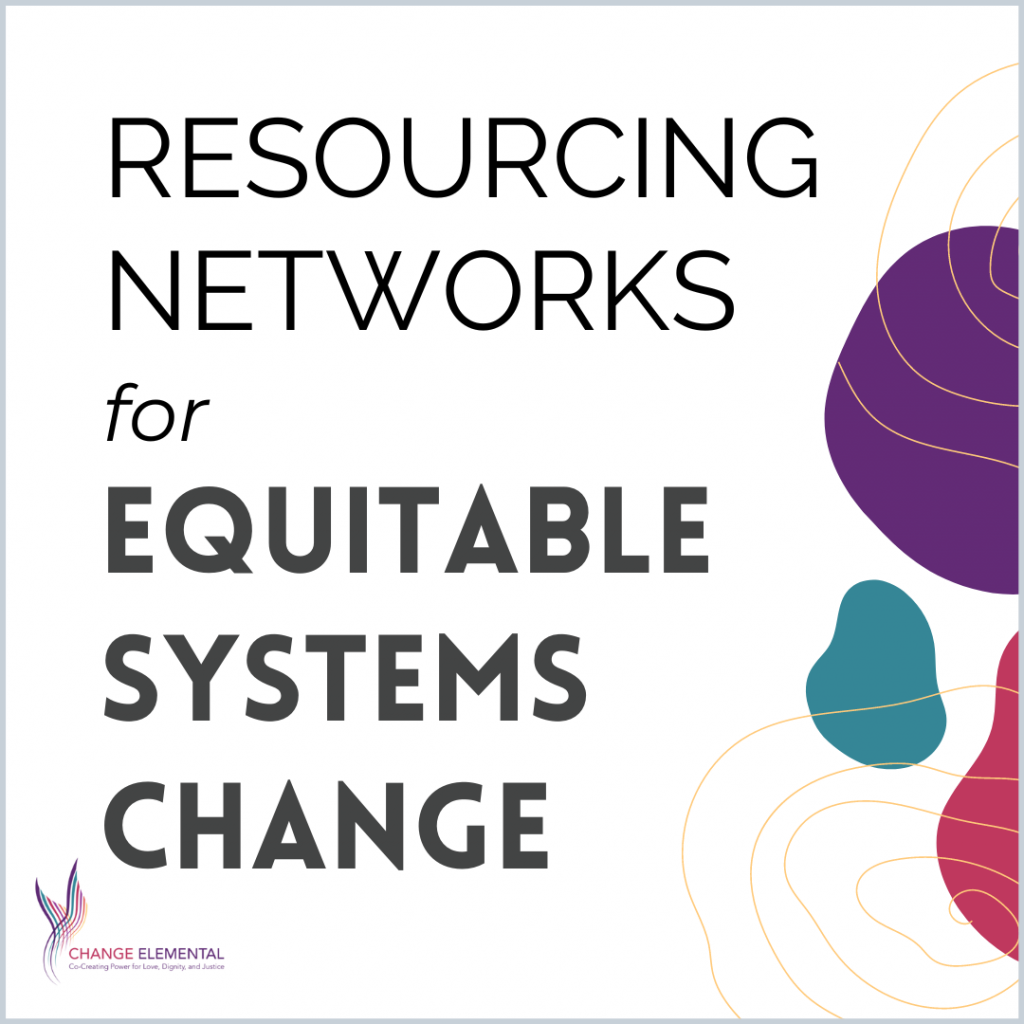
To dig into more stories and insights as well as many other resources about networks, see the report, “Resourcing Networks for Equitable Systems Change: Perspectives from Funders, Intermediaries, Individuals and Organizations on How We Fund and Support Networks for Equity.”
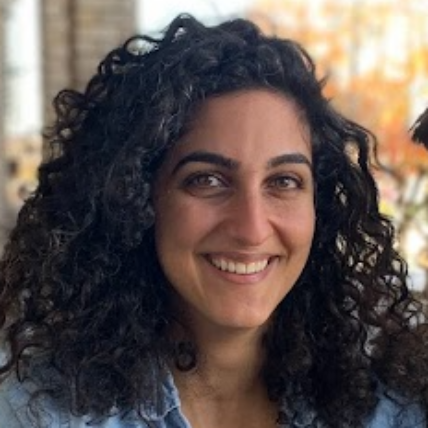
Natalie Bamdad (she/her/hers), joined Change Elemental in 2017. She is a queer and first-gen Arab-Iranian Jew, whose people are from Basra and Tehran. She is a DC-based facilitator and rabble-rouser working to strengthen leadership, organizations, and movement networks working towards racial equity and liberation of people and planet.

Alison Lin (she/her/hers) supports leaders in authentic collaborations to transform people and systems toward love, dignity, and justice. With over 20 years of leadership experience, she draws from work in race equity, complex systems change, organizational development, learning through experimentation and life with a focus on issues affecting LGBTQ and BIPOC communities. She joined Change Elemental in 2017.
Video recording, editing, and photos by Breathe Media Group
Graphic recordings by Brandon Black
Cover photo by Brian Stout
Originally published at Change Elemental

Network Weaver is dedicated to offering free content to all – in support of equity, justice and transformation for all.
We appreciate your support!
donate in the box above or click here
Seeing the World Through a Network Lens
June Holley offers Network Weaving Workshop, another training slide deck for use in your organization or network. It provides an introduction to many network concepts and includes a number of activities such as speed networking, mapping your network, and the Network Weaver Checklist.
This slide deck is particularly good for sets of organizations who are not well connected. As result of this session, they would be starting to see the world through a network lens.
The slides are offered in pdf format, but we are also sharing a link to the google slides. Create a copy of the presentation and save it as a new name in your google drive. This way, you can modify them to adapt the presentation to the particular group you are working with.
Access the Network Weaving Workshop slide deck HERE.
June Holley has been weaving networks, helping others weave networks and writing about networks for over 40 years. She is currently increasing her capacity to capture learning and innovations from the field and sharing what she discovers through blog posts, occasional virtual sessions and a forthcoming book.
featured image found HERE
Reimagining a Regenerative Future — Part 1
Navigating radical uncertainty with radical tenderness…

MATURITY is the ability to live fully and equally in multiple contexts; most especially, the ability, despite our grief and losses, to courageously inhabit the past, the present and the future all at once. The wisdom that comes from maturity is recognized through a disciplined refusal to choose between or isolate three powerful dynamics that form human identity: what has happened, what is happening now and what is about to occur.
~Anais Nin (quoted in brainpickings; italics mine)
Never has there been the need to inhabit multiple contexts more than now — “to courageously inhabit the past, the present and the future”. The start of 2020 presaged chaos, collapse, and terror. In January, the megafires of Australia. In February, megafloods. In March, a deadly pandemic. No respite! The machineries of the world has collapsed and laid bare their fractures and fissures in the face of Covid-19 highlighting the appalling inequality, failed governments, spurious economic policies, failing and flailing nation-states, the exploitation, extortion, and extraction that runs the economy, the dehumanization of humans, and utter disregard for this fragile and beautiful planet.
2021 began with vaccines, which could and should have brought nations together with humanity prevailing over all surface differences to face a global challenge. Instead this degenerated into “vaccine apartheid” with wealthy nations like the USA and Britain opposing India and South Africa’s bid to waive Covid-19 vaccine patents. Vaccine hoarding is another game being played: “… though rich nations represent just 14% of the world’s population, they have bought up 53% of the most promising vaccines so far.” Rich countries hoarding Covid vaccines, says People’s Vaccine Alliance. What could have been a defining moment of compassion, connection, and care in the civilizational narrative turned into repulsive power play, politics, profiteering, and a show of brute strength and shocking neocolonial racism.
The dual traps of neocolonialism and neoliberal capitalism blinded leaders and nations to the most crucial lesson that the pandemic taught us. The infallible truth of our inextricable interconnectedness and interdependence with all sentient beings and this Planet. We cannot survive, let alone thrive, as long as a vast majority of the planet remains oppressed, disregarded, and disavowed. “All the catastrophes we face now are byproducts of a feeble, decrepit industrial-capitalist economy. All that is what capitalism really is — exploitation of you, me, the planet, life on it, democracy, and the future, by organizations wealthier than countries, with legal superpowers, whose only goal is to maximize profit, at any cost. How are we to cohere, prosper, survive, endure — grow?” ~ Umair Haque. One would have thought that the pandemic must have driven this lesson home when a microscopic zoonotic virus jumped species and ravaged the world. Apparently not!
The pandemic, nonetheless, was a point of discontinuity — a rupture in the seams of the already fraying civilizational narrative of universal and never-ending growth and development, the utopia of technology as savior, and the myth of the West leading the rest of the world on an onward march of progress. There have been many moments of disruption, but none spanned the globe with such a visible and terrifying impact bringing mighty nation-states to their knees and halting the juggernaut of the ostensibly unstoppable machinery of global economy. This rift threw up with blinding clarity the brokenness that lay hidden just beneath the surfaces of society, politics, and other machineries and machinations of civilization. The simultaneous collapse of essential systems across the globe — from healthcare and economics to politics and education — are visible evidence of an obsolescing and degenerating civilizational narrative. The depravity and decadence underlying the world order revealed themselves in all their shame.
2020 became an inflection point in the trajectory of the Anthropocene catapulting us directly into the liminal space of radical uncertainty for which we had no script. A space without stories to anchor us, a space of incongruities and paradoxes, of death and decay — a seemingly yawning chasm of obscurity. We were left grappling to make sense. In this interregnum, the questions we ask are crucial acting as compasses in an essentially map-less territory of radical uncertainty.
What if we could navigate radical uncertainty with fierce compassion and radical tenderness — for ourselves, for each other, for all sentient beings, for this beautiful, fragile Planet?
What would those choices and decisions made from a place of fierce compassion look like?
How would we envision our collective future from a place of radical tenderness?
In a 2015 Manifesto called Radical Tenderness, Dani d’Emilia and Daniel B. Chávez writes: “radical tenderness is to not collapse in the face of our contradictions… is to have peripheral vision; to believe in what cannot be seen.” The words are hauntingly evocative, prophetic, and profound. The chaos and conflicts threatening us daily are overwhelming, and it is easy to sink into despair and a desperate yearning for some semblance of stability and certainty. The pandemic can be a portal towards a regenerative future inviting us to hospice what no longer works, and to midwife the new. If only we can “believe in what cannot be seen”.
How can we collectively hold space for the new shoots to emerge from the debris and decay of this collapsing world?
How can we be stewards of those narratives that have been disowned and denied for centuries — those unheard, unseen, unacknowledged ways of being, seeing, sensing, and knowing which can be our salvation towards a regenerative future?
We know in our guts that there is no going back to the “old normal” if we want to survive as a species on this Planet we call home. We can also feel the quiet, ephemeral presence of the more beautiful world our hearts know is possible. “Another world is not only possible, she is on her way. On a quiet day, I can hear her breathing,” wrote Arundhati Roy.
The hegemonic narrative of growth, development, and modernity imposed through the imperial project of colonization — Eurocentric and Western — has not only been running the show for centuries but has sterilized and homogenized all other ways of being and relating on this planet. Donna Haraway called it “playing the god trick”. Now this “god trick” has spectacularly failed as it must. The ineffectuality of this monocultural worldview in a diverse and pluricultural planet is starkly visible.
By excluding, delegitimizing, and disavowing myriad ways of being, seeing, learning, and knowing that did not subscribe or partake in the mainstream, hegemonic, civilizational narrative, we failed to make sense of an inconceivably diverse world. The arrogance of this primarily Western cosmology and ontology being the only meaning-making device available to humanity is astounding in its presumption.
The pandemic is clearly an inflection point. The breakdown of the old order and its edifices are asking us to slow down, to connect with our inner wisdom, to lean into this liminal space of uncertainty and ambiguity, to widen our peripheral vision, and listen to Earth’s invitation to co-create a thriving, flourishing Planet — “a world where many worlds fit”. And maybe, just maybe — we will catch a glimpse of the shoots of the possible futures amidst the debris and decay of the dying.
Let us slow down and listen to the unheard, unnoticed, unappreciated voices and narratives signaling to us from the peripheries, from the edges of “civilization”. Voices and stories that have for centuries been marginalized, demonized, invisibilized — the oppressed, brutalized, and systematically persecuted voices of the human and the more-than-human. The sidelining was part of the project of colonization resulting in immeasurable loss, disconnection, and untethering for millions in the Global South. Global South is not a geographical location but a metaphorical identity that enfolds the unseen and the unheard, the disowned and the disavowed, the delegitimized, invisibilized, and demonized billions. Global South exists in the peripheries and margins everywhere. We become aware of them in movements like #BlackLivesMatter, #IndiaFarmersProtest, and many other local movements of dissidence and resistance that fly under the radar, are never reported, often brutally quelled — in short, effectively and methodically made invisible.
Why is it crucial to integrate the unheard, unseen, unfamiliar narratives into the new civilizational narrative of a regenerative future?
What is the essence of a world that contains multitudes of narratives — a world where many worlds fit?
How do we reimagine a regenerative future — a world where many worlds fit?
What are the founding principles and values of a Pluriverse?
When we acknowledge with humility that we can never know it all — that our knowledge will always be situated, contextual, and partial stemming from the land and its culture can we step into the emergent space of radical uncertainty with hope and humility. What we can do is listen with fierce compassion and co-create containers for fearless dialogues of possibilities.
Dialogues offer us opportunities to intertwine and interweave the myriad ways of being, seeing, and knowing. And dialogues also save us from the dangers of a single story. Dialogues offer us spaces for co-sensing and listening to each other.
~TEDx, The Story of the Global South
In the next part of the post, I explore the concepts of Pluriverse, and why is this necessary to shift the civilizational meta-narrative to one that is inclusive, compassionate, pluri-cultural, and regenerative. None of us have the answer, but we can collectively re-imagine a regenerative future by coming together in fearless dialogues — dialogues revolving around our hurts, our hopes, and our healings.
Article originally published here in The Age of Emergence
Sahana Chattopadhyay —Sahana Chattopadhyay is a global Speaker, Writer, Master Facilitator, Organization Development Consultant, and Coach. She works at the intersection of Complexity, Human Potential, Organizational Transformation, Systems Thinking, and Emergence. Her passion is to enable organizations to develop the capacities, skills, and mindsets to become “thrivable” in the face of uncertainty and ambiguityr, writer, facilitator, and story-seeker. (https://linktr.ee/sahana2802)
I am a part of the Possible Futures collective. I deeply acknowledge the many fearless dialogues here that have helped me shape my thoughts and birthed new ones.

PLEASE DONATE to help Network Weaver continue in it’s mission to offer free support and resources to networks worldwide.
Intergenerational Practice and Space
This week, Network Weaver is excited to share a 3-part series by Root. Rise. Pollinate! on fostering connection in virtual space. The series was originally published earlier this year at The Reverb.
How we can create beautiful connections and discoveries across generations.
Posts one and two of this series focused on setting virtual space and intentionally cultivating and sustaining the kind of energy required to be in non-physical space together. In this final post of the series, we center the “who” — the mix of people to invite into and be in space with, especially in light of the isolation that’s come with observing COVID-19 physical distancing safety measures. Here we lift up the beauty, imperative for, and power of intergenerational space.
What’s Possible When Young, Middling, and Elders Come Together?
Dominant narratives (including in organizing) often pit young versus old against each other, and render elders as spent, disposable, or out of touch. Our movements too often sideline both younger and older generations, and seldom do we meet. Yet many of us who’ve sat down for conversation or play with elders or those who are younger than us, including babies, know and relish the beautiful connections and discoveries that we can experience in encounters across generations.
We, present day dwellers of Mother Earth are here because of, and through our ancestors, just as some day our descendants will be here because of and through us.
We learn from and listen to messages from the past in order to seed the future, and we too must draw on and commune with all of us — young, old, and in-between — both human and non-human beings.
As you design your virtual space and identify different community members to share breath, ritual, and movement practices, pay attention to the mix, in terms of age, of who gets to hold space. You could pair the youngest and oldest members of your community to share old or new practices that they create together. Or perhaps you could have an intergenerational mix of people in breakout rooms together for intimate conversations and mutual learning. Importantly for learning and deepening relationship, make space for the virtual community to then share what they have heard from each other, what challenged them, what they are grateful for, and what they would like to cultivate and take beyond the virtual space with them. And remember to invite community members to acknowledge, express appreciations, and create opportunities to continue to connect with each other beyond the virtual space.
These physically distanced times have created an opportunity for us to cultivate and create sacred intergenerational relationships that we rarely get in organizing and “movement” spaces.
As we close out this series of posts, we also share with you the power and connection that comes out of being intentional in how you close your virtual space. The beginning is just as important as the end as the end is in fact another new beginning.
Just as we invited you to open and arrive with ritual and breath practice, we invite you to have in place ways in which you bring your space to close. Options include:
- Inviting community members to share short reflections, gratitude, a song, or a poem
- Physically replicate hugging and sharing an embrace with each other
- Rubbing your hands together to generate heat and move energy, then sharing that out by holding your palms out to community members on the other side of the screen, and then receiving the heat and energy to hug ourselves
We hope you enjoyed this series and would love to hear about other rituals, breath, and movement practices that you’re trying out or have found particularly potent in your own virtual gatherings.
Read post 1 HERE and post 2 HERE
Originally published April 16, 2021 at The Reverb.
Root, Rise, Pollinate! is an experiment that aims to catalyze and nurture a transnational community of feminist human rights advancers, organizers and movement builders using embodied practice for social transformation.
PLEASE DONATE to help Network Weaver continue in it’s mission to offer free support and resources to networks worldwide.
Embodied Practice
This week, Network Weaver is excited to share a 3-part series by Root. Rise. Pollinate! on fostering connection in virtual space. The series was originally published earlier this year at The Reverb.
How to bring movement practice into virtual space to foster connection with our bodies’ wisdom
In our first post we shared the importance of breath practice and ritual for deep connection in virtual space and offered rituals grounded in the elements of air, water, and fire. As we share the next practice on embodiment, we’d like to invite you to consider how all elements, air, water, fire, and earth live within each of us.
How do we embody each element at different times including times of upheaval and possibility for interdependence, deep connection, and love in a rapidly changing world like now?
Embodying The Change We Seek
Movement requires movement. The simple truth of this statement is particularly important during these times of physical separation, especially when we sequester ourselves in our homes and lie or sit in one position for long periods of time. Perhaps we are in front of screens for work or to indulge in whatever’s on offer from the multitude of streaming services that keep popping up.
While this time of COVID-19 is a particular point in our lives, around the world, over time, many of our people have become disembodied as a result of the privilege given to intellectual knowledge and grind culture over more holistic ways of knowing and being. This has led to individual and collective burnout, and even trauma. Even changemakers now ground much of our work in logic models, pages upon pages of strategy, theory, and deep analysis. We lead with our heads, not our hearts and bodies, even though we often already know in our bodies what is most important. In leading with our heads, we lose touch with our bodies sometimes to the point of breakdown and exhaustion.
When we are disembodied, it can be hard for us to tap into what the change we seek would feel like.
If we are disconnected from our bodies, how do we know how and where feelings of joy and inspiration show up in our bodies?
How do we tap into the inner wisdom that tells us when we need to pivot into something more life-giving and sustainable? How well do we connect to the hearts, minds and bodies of ourselves and fellow beings?
Therein lies the importance of body-based work so that as we reconnect with and listen to our bodies, we can draw on and be one with the delicate balance of earth, water, air, and fire that lives within us and is required for the liberated, sustainable, and thriving world that so many of us work tirelessly for.
So how might you bring movement practice into virtual space to foster connection?
You can draw on and invite your community members to share practices that they already know and engage in like somatics, tai ji, and yoga. As you practice, be sure to move with your breath, being conscious about the physical actions you take with each inhale and exhale.
Ultimately, starting virtual gatherings with practices — like (breathing through) movement — can help bring everyone’s bodies, minds, and spirits into alignment, enabling deeper conversations. Starting with and in our bodies allows us to be more present with each other and experience a sense of intimacy, even across distance, time, and experience.
An Invitation
Consider this: how might physical movement coupled with breath support you and your connection to those you care about? Who might you invite to practice with you? Next time we’ll touch on the practice and importance of fostering intergenerational space.
Thank you for continuing to journey with us.
Read post 1 HERE and post 3 HERE.
Originally published March 11, 2021 at The Reverb.
Root, Rise, Pollinate! is an experiment that aims to catalyze and nurture a transnational community of feminist human rights advancers, organizers and movement builders using embodied practice for social transformation.
PLEASE DONATE to help Network Weaver continue in it’s mission to offer free support and resources to networks worldwide.

